A hulking 1930s freight terminal on Manhattan’s West Side has joined a timber-framed airplane hangar in Los Angeles, an Irish flour mill, and a historic pier, also in Manhattan, as the latest Google office complex to repurpose and give new luster to an already-remarkable existing building.
Officially debuting earlier this week, Google’s 1.3-million square foot St. John’s Terminal building—new North American headquarters for the tech behemoth’s Global Business Operation—is also a significant upwards expansion. The ambitious adaptive reuse project adds a total of nine new floors of office and communal space to the original three stories of a sprawling existing podium: a brick-clad structure completed in 1934 by the New York Central Railroad that served as the southern terminus for a long-defunct elevated freight line that once ran along Manhattan’s West Side (famously reincarnated as the High Line).
The reimagined St. John’s Terminal rises 12 stories above Washington Street as a familiar yet altogether new neighborhood landmark whose transformation, in addition to the vertical addition, included demolishing a portion of the historic structure north of Houston Street and wrapping the entire complex in 1.5 acres of native vegetation. The landscape scheme extends from the street-level to the building’s lushly planted terraces to the “rail bed gardens” visible on the front facade that design architect COOKFOX says “visually connects pedestrians and occupants to nature while enhancing the newly opened streetscape.”

Looking south from a landscaped terrace, with sweeping views of the Hudson River. Photo courtesy Google
At a February 21 ribbon-cutting ceremony, Manhattan Borough President Mark Levine described the new St. John’s Terminal as a “horizontal skyscraper” that’s the “most exciting office restoration project in New York, bar none.”
According to Google, the LEED Platinum-certified project saved 78,400 metric tons of carbon dioxide equivalent emissions by avoiding the creation of a new structural foundation.
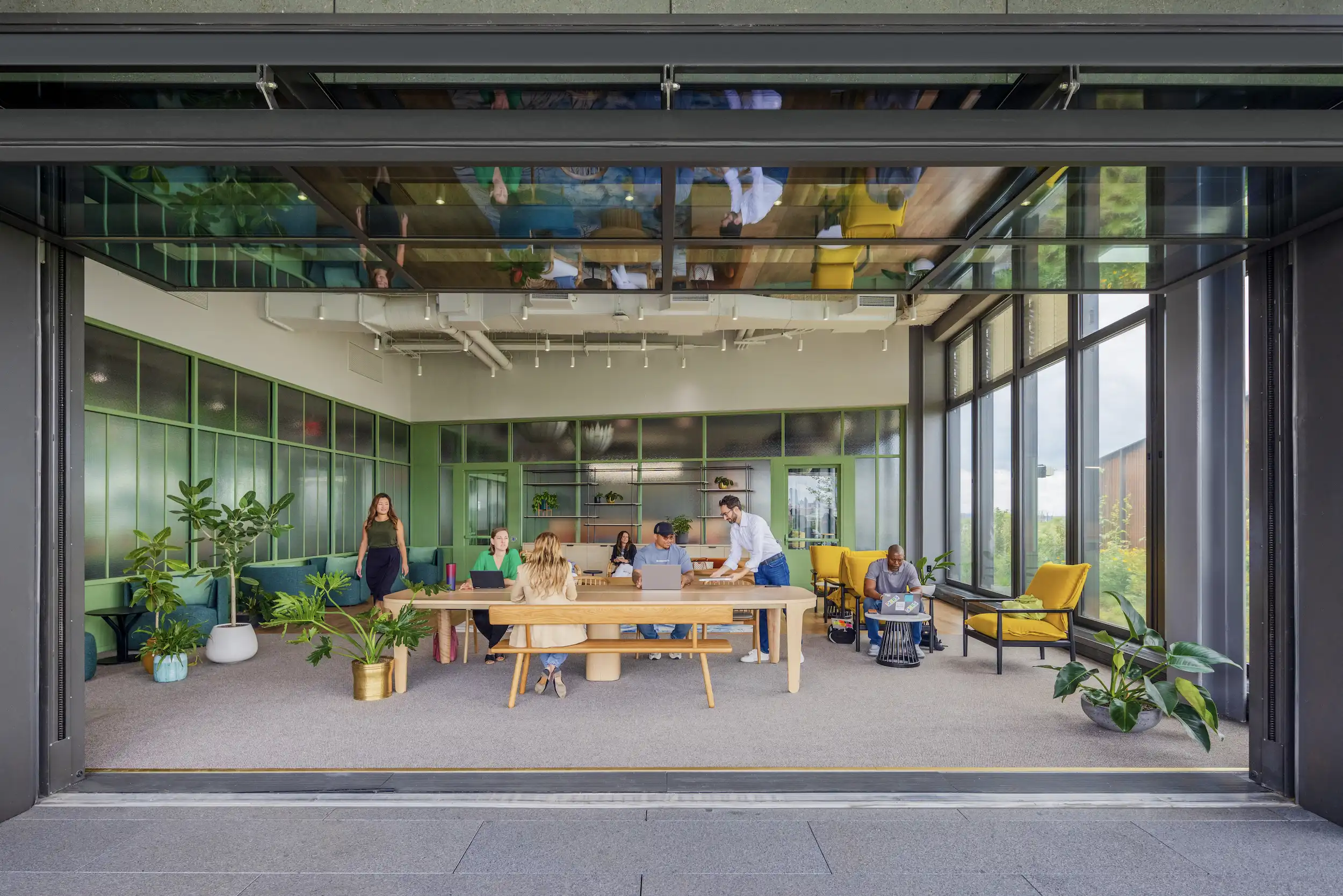
1
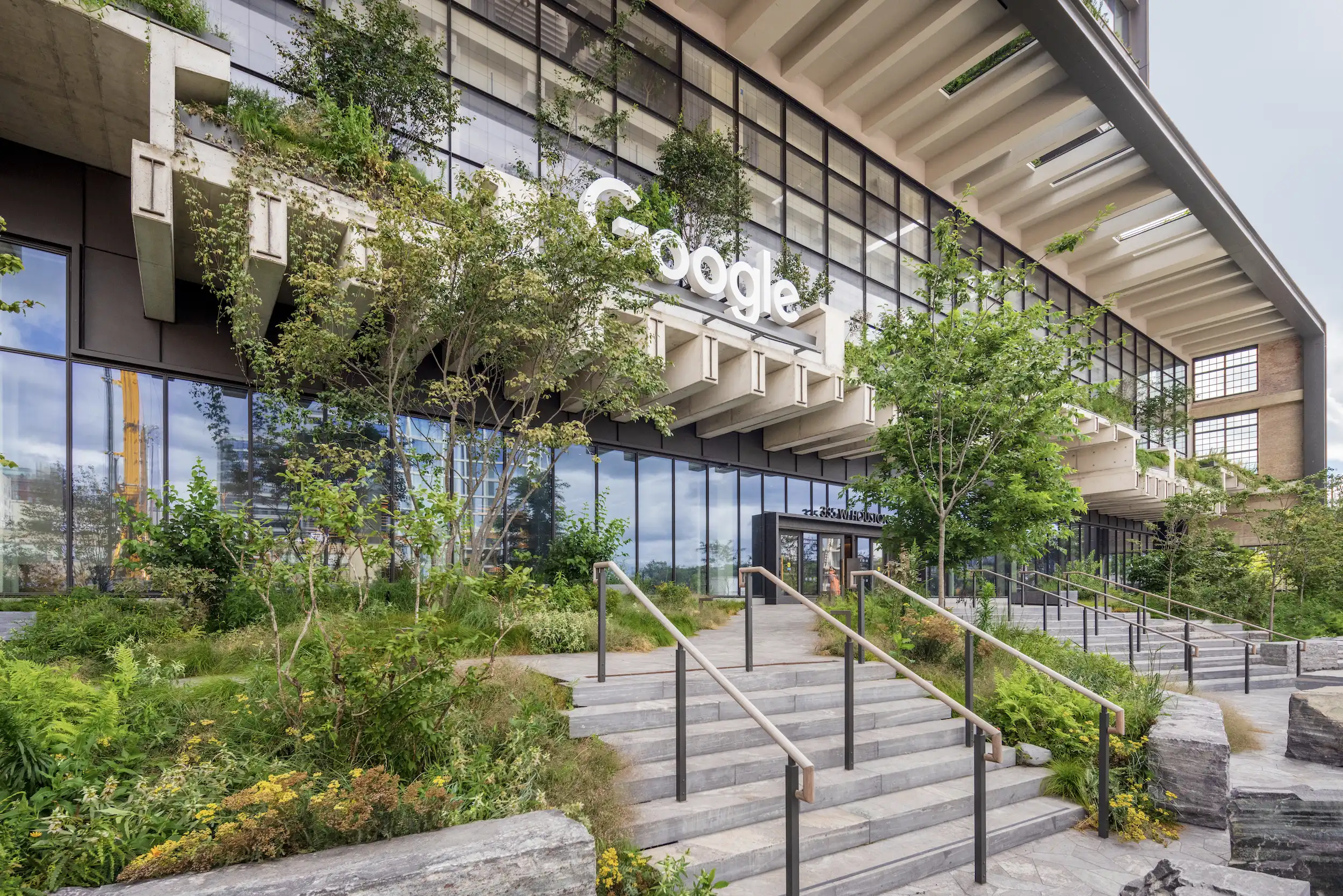
2
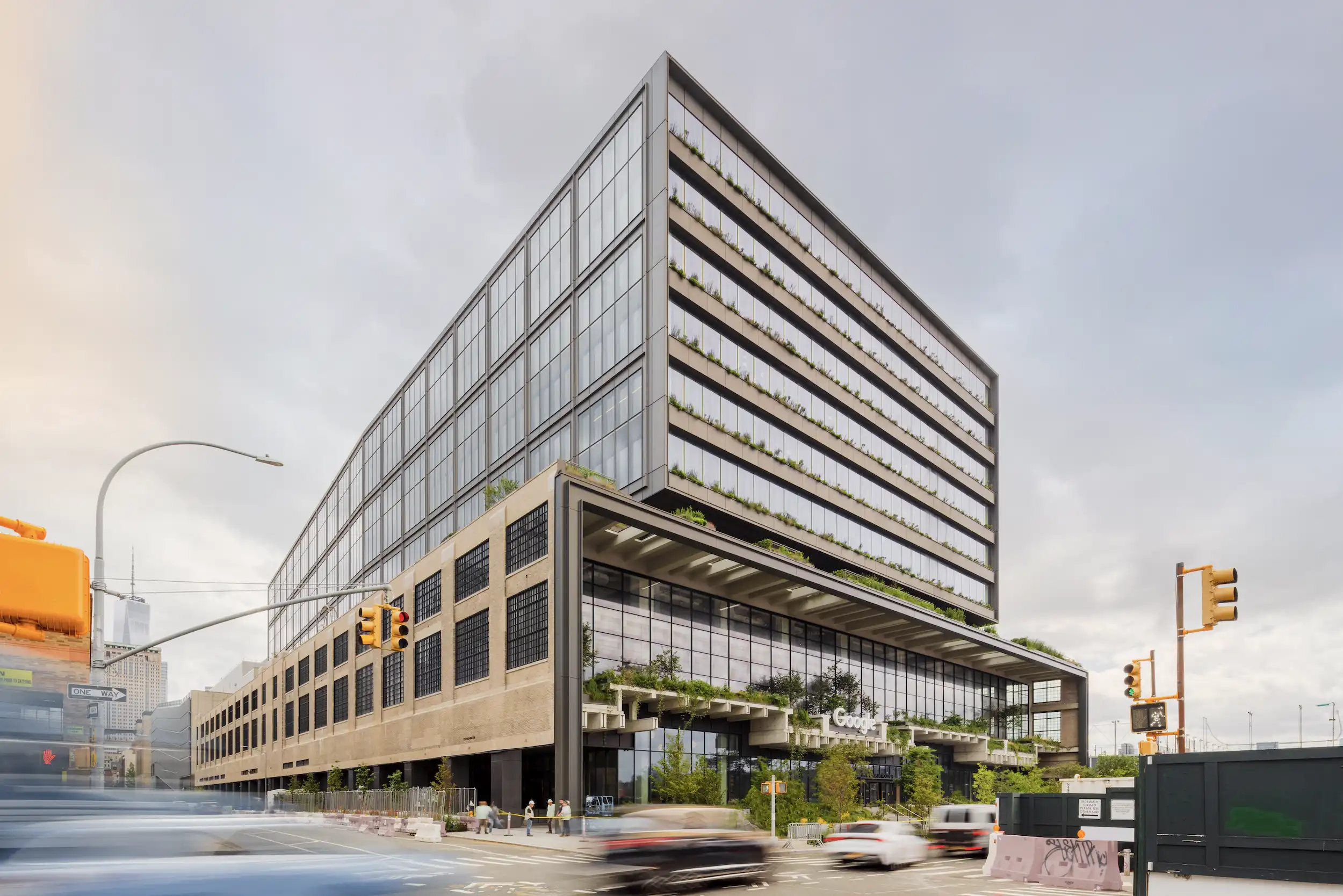
3
In a nod the building’s industrial heritage, large garage doors open to a communal lounge (1); “section“ view of the front facade from Houston Street with original rail beds visible (2); the terminal previously extended over Houston Street via an overpass; the smaller northern section was demolished as part of the redevelopment (3). Photos courtesy Google
Joining COOKFOX was a larger design and engineering team including Gensler in the role of lead interiors architect and Brooklyn-based landscape design practice Future Green Studio. St. John’s Terminal was developed by Oxford Properties, which sold the building to Google, initially the property’s lessee, in 2021 for a staggering $2.1 billion—New York’s largest single-building real estate deal since the beginning of the Covid pandemic.
COOKFOX founding partner Rick Cook will discuss the project during the forthcoming, adaptive reuse–focused Record on the Road event on March 27 in New York. Joining Cook for the event’s editorial symposium is Philip Schmerback, U.S. studio director at Herzog & de Meuron, who’ll be discussing the conversion of a former power station in Brooklyn into Powerhouse Arts.

An onsite solar terrace is one of numerous sustainability strategies. Photo courtesy Google
Spanning two city blocks, St. John’s Terminal is one of the largest structures in Hudson Square, a small neighborhood wedged between Soho, the West Village, Tribeca, and the Hudson River Greenway that, in a past life, was a busy industrial enclave dominated by warehouses and printing presses. Today, the 18-block neighborhood—rezoned in 2013—is dominated by the offices of media companies and creative startups along with a steady supply of high-end residential developments. (A pair of sleek condo towers, designed by COOKFOX, will soon emerge from the construction pit in the northwestern corner of the neighborhood, directly across the way from the new Google HQ.) In the decades between its 1960 decommissioning as a freight terminal and its Oxford Properties-led redevelopment, St. John’s Terminal was converted into a warehouse and office block that attracted a lively mix of tenants across a range of industries, from textiles to banking; in more recent years, the complex sat semi-abandoned.
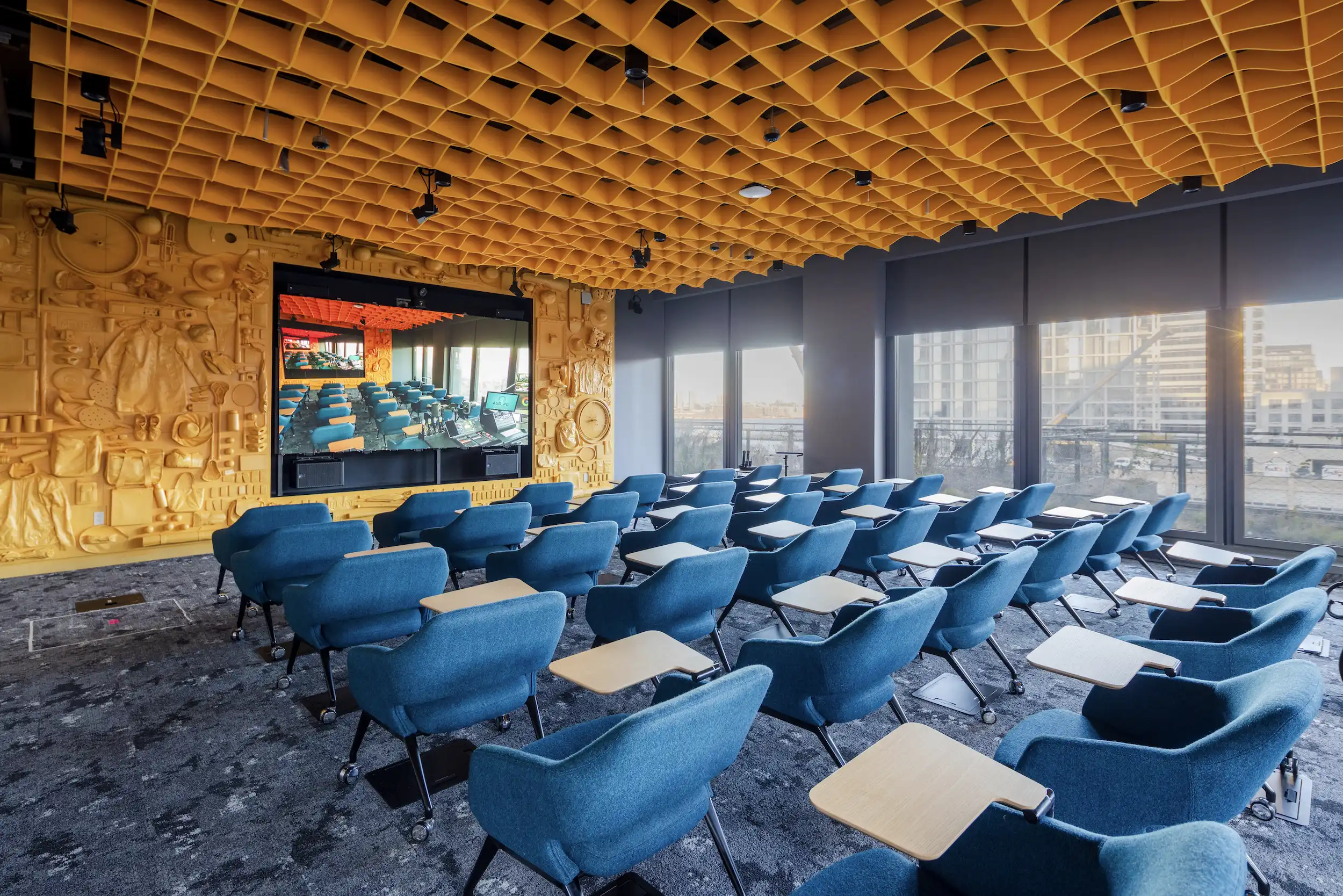
4
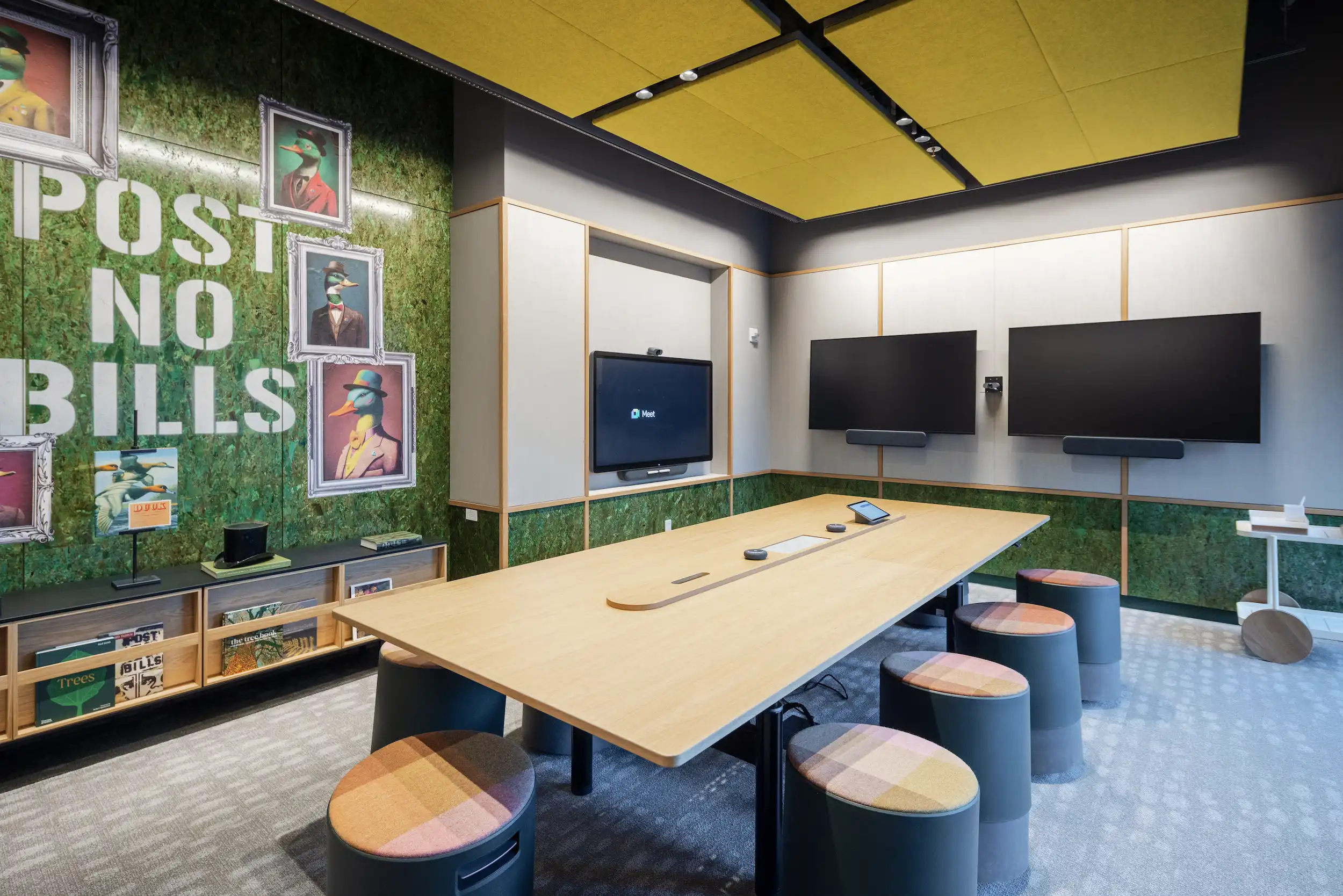
5

6
A flexible lecture/conference room on the features an art installation comprising lost-and-found items from the New York City Subway (4); one of several conference rooms, each named after a species of tree found in New York, within the building's two-story event space (5); housed on the ground-level of the original terminal building, the soaring Great Hall is the social hub of the 12-story office building (6). Photos courtesy Google
St. John’s Terminal serves as anchor of Google’s Hudson Square mini-campus, which also includes leased office space at 315 and 345 Hudson Street. Although the Mountain View, California-based company is a somewhat recent arrival to this particular pocket of the city, it is no stranger to Manhattan’s West Side. Google’s two other major New York City hubs are both located roughly a mile north of St. John’s Terminal on the western fringes of Chelsea. Like St. John’s Terminal, both properties, 111 Eighth Avenue and Pier 57, are significant revamps of historic industrial buildings: an Art Deco high-rise built in 1932 as an inland freight terminal-slash-manufacturing hub and a National Register of Historic Places–listed overwater shipping terminal heralded as a marvel of engineering upon its completion in 1954. The former building has served as Google’s main East Coast headquarters since 2010.
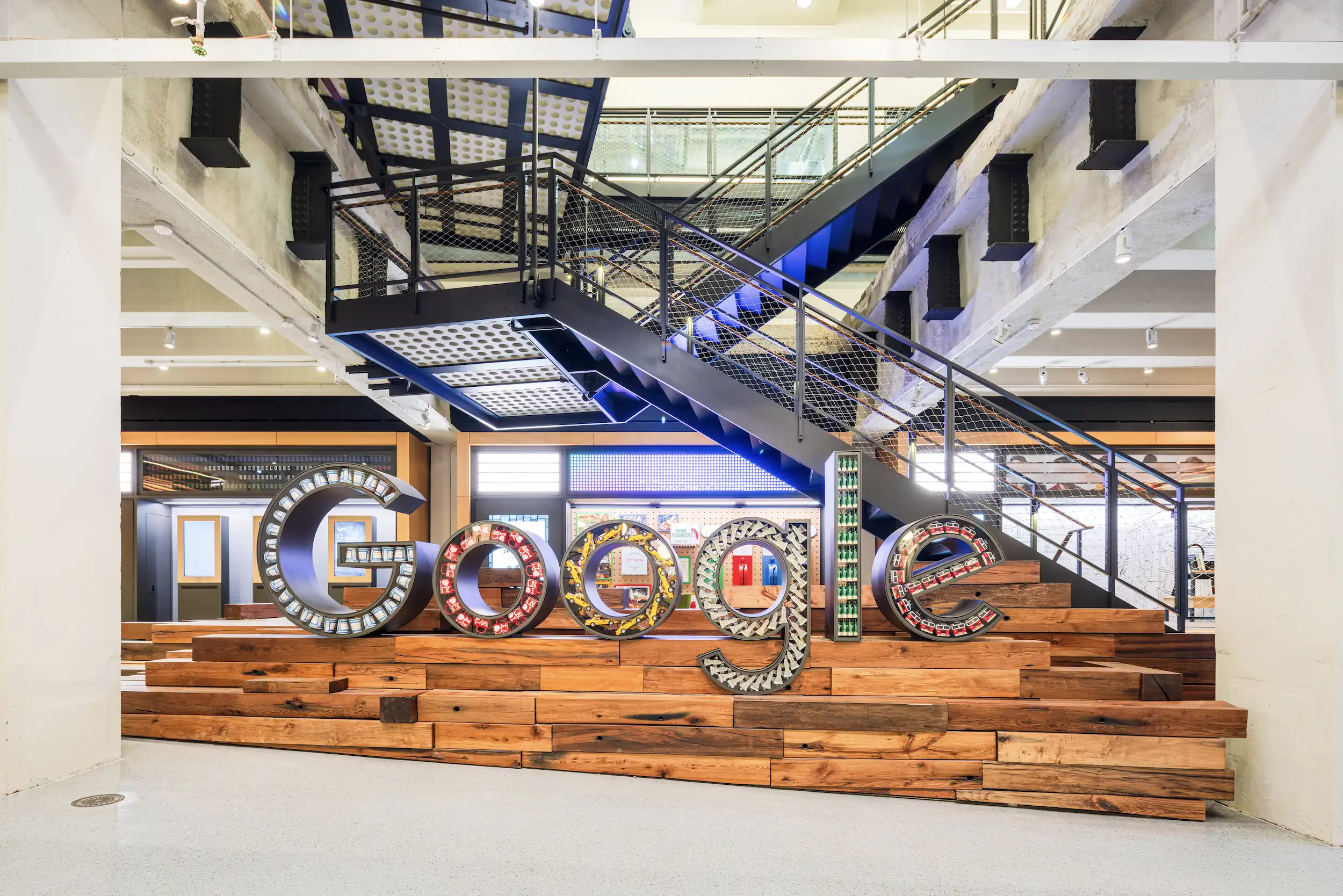
Playful Homages to the Big Apple can be found throughout the building's interior. Photo courtesy Google
Roughly 3,000 members of Google’s 14,000-person New York City workforce will be based out of St. John’s Terminal’s 60 team-based “neighborhoods” that populate the natural light–flooded upper floors of the building. Designed by Gensler to foster social interaction and cohesion among teams comprising 20–50 Googlers, the neighborhoods do away with fixed desk arrangements in favor of flexible seating arrangements. Communal spaces also abound at St. John’s Terminal including myriad lounges, cafés, and terraces on the office floors and the cavernous Great Hall on the ground level.





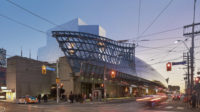
Post a comment to this article
Report Abusive Comment